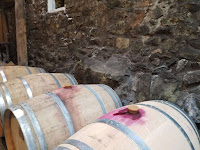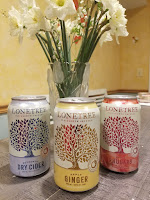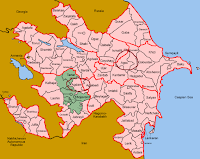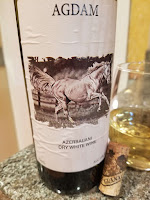 Like the Wine Tour Across Borders between Baranja (Croatia) and Villány (Hungary), there is a similar scene between Neusiedlersee (Austria) and Sopron (Hungary) that I will refer to as the Pannonian Area Wine Region. This region encompasses remnants of the Austria-Hungarian Empire and also includes parts of Slovakia, Slovenia, and Croatia. The Austrian Neusiedlersee represents the western border with the lake providing a tempering effect on the climate—ensuring that winters are relatively mild, summer is moderately hot, and fall is generally long and hot. Immediately to the east, lies the Sopron wine region and Hungarian wine literature is basically equivalent to its Austrian counterpart:
Like the Wine Tour Across Borders between Baranja (Croatia) and Villány (Hungary), there is a similar scene between Neusiedlersee (Austria) and Sopron (Hungary) that I will refer to as the Pannonian Area Wine Region. This region encompasses remnants of the Austria-Hungarian Empire and also includes parts of Slovakia, Slovenia, and Croatia. The Austrian Neusiedlersee represents the western border with the lake providing a tempering effect on the climate—ensuring that winters are relatively mild, summer is moderately hot, and fall is generally long and hot. Immediately to the east, lies the Sopron wine region and Hungarian wine literature is basically equivalent to its Austrian counterpart: "Sopron lies in the northwest of Hungary, directly on the border with Austria...where it shares its viticultural traditions with Burgenland. Its 1,579 hectares of vines are planted on the slopes of the Sopron and Kőszeg Hills and around Lake Fertő, as Neusiedlsee is known in Hungary, at altitudes of 150 to 400 meters above sea level. It is basically a direct continuation of the vineyards around Rust and the Leitha Hills in Austria. The best area for viticulture is in the north between Lake Fertő, Balf and Fertőrákos. However, there are also vines to the east of Sopron. Vines are generally planted on the northwestern and southwestern slopes where there is less risk of frost." -- TasteHungary.com
Kékfrankos (Hungarian for Blaufränkisch) is the major grape variety in Sopron which thrives around the lake, where "there is less loess and brown forest soil and more mica schist and gneiss, which gives the wines great minerality". This mico schist is found nowhere else in Hungary. Steigler Winery utilizes organic grapes grown in this mico schist, particularly from the "best slopes of Sopron: Steiger, Frettner, and Spern Steiner. The winery was founded in 2015 by Bálint Lőrinczy -- and winemaker Tamás Varga crafts wines from grape varieties sharing a common heritage with neighboring Burgenland. The Steigler, Kékfrankos, 2020 ($23.90) is one example. This wine is available in the U.S. through Taste Hungary, but I had a few glasses at a recent Hungarian festival sponsored by the Kossuth Foundation. This is an organic wine, from vines that are eight to 20 years old, fermented in open vats for 12 to 15 days, and aged in 50 percent steel tanks and 50 percent oak barrels for 12 months. Think fresh plums and sour cherries with racy minerality and acidity, the latte not normally associated with red wine.
 Closer to the Alps and across the border is Neusiedlersee and without the lake's climate stabilizing influence, winter would arrive earlier, shortening the growing season. This would make it much more difficult to grow later ripening grapes such as Blaufränkisch and Austria's signature grape, Grüner Veltliner. Even though Blaufränkisch doesn't have a similar DAC designation as Zweigelt, it is a major player in Burgenland and the Neusiedlersee.
Closer to the Alps and across the border is Neusiedlersee and without the lake's climate stabilizing influence, winter would arrive earlier, shortening the growing season. This would make it much more difficult to grow later ripening grapes such as Blaufränkisch and Austria's signature grape, Grüner Veltliner. Even though Blaufränkisch doesn't have a similar DAC designation as Zweigelt, it is a major player in Burgenland and the Neusiedlersee. That is where the Domaine Andau cooperative farms 660 ha of vineyards with a certain percentage of Blaufränkisch. See Grape Spotlight: Neusiedlersee Zweigelt for a more detailed overview of the winery (as well as Zantho). Their 2019 Blaufränkisch (€9.50) was included in our Hopwine allocation and is simply delicious. Imagine dark red cherries, a chewy interior, soft tannins, and a touch of spice and tobacco. The Zantho 2021 Blaufränkisch (€8.90) is quite different, with a more intense profile starting with the aroma, then darker fruit; more minerality and tannins; and a longer, lasting finish. I definitely need to procure full bottles of each in the future.
That is where the Domaine Andau cooperative farms 660 ha of vineyards with a certain percentage of Blaufränkisch. See Grape Spotlight: Neusiedlersee Zweigelt for a more detailed overview of the winery (as well as Zantho). Their 2019 Blaufränkisch (€9.50) was included in our Hopwine allocation and is simply delicious. Imagine dark red cherries, a chewy interior, soft tannins, and a touch of spice and tobacco. The Zantho 2021 Blaufränkisch (€8.90) is quite different, with a more intense profile starting with the aroma, then darker fruit; more minerality and tannins; and a longer, lasting finish. I definitely need to procure full bottles of each in the future.
















































